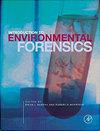Monitoring ambient air particulates, VOC and CO2 pollutants concentrations, particulates numbers by AQ Guard Ambient sampler
IF 1.2
4区 环境科学与生态学
Q4 ENVIRONMENTAL SCIENCES
引用次数: 0
Abstract
Abstract The AQ Guard Ambient sampler is the most advanced compact device that collects ambient air pollutants of various particle sizes. This study collected ambient air pollutant particles of various sizes, CO2 and VOC concentrations and particle numbers from April to May of 2021 using the AQ-guard ambient sampler at Taichung Science Park. The relationships among various particles sizes, CO2, VOC concentrations and total particle numbers in conjunction with the meteorological conditions are also discussed. Appropriate statistical methods were used to test the mean concentration differences between various particulate sizes, CO2, VOC and total particle numbers at Taichung Science Park. The results indicated that particle concentrations of various sizes (PM1, PM2.5, PM4, PM10, PMtot), CO2, VOC concentrations and particulate numbers at the sample location over the study period were the highest on April 21 and gradually decreased from April 21 to May 23, 2021 at Taichung Science Park. The meteorological conditions; temperature, relative humidity and wind speed were negatively displayed but moderately correlated with the ambient air particulate concentrations, CO2, VOC and particulate numbers. The relationships between ambient air particles (PM1, PM2.5, PM4, PM10, PMtot), and CO2, VOC concentrations displayed moderate correlated relationships. The results further showed that there were mean concentration differences existing for most of the pollutants (particulates, CO2 and VOC) monitored by the AQ Guard Ambient sampler in this study. The relationships among particles sizes of PM1 v.s. PM2.5, PM2.5 v.s. PM4, PM4 v.s. PM10, PM10 v.s. PMtot were highly correlated with the mean concentrations. However, the results further showed that they also displayed no significant mean concentration differences for PM1 v.s. PM2.5, PM2.5 v.s. PM4, PM4 v.s. PM10, PM10 v.s. PMtot were collected by the AQ Guard sampler at this Taichung Science Park sampling site.监测环境空气微粒,挥发性有机化合物和二氧化碳污染物的浓度,微粒数的AQ卫士环境采样器
本文章由计算机程序翻译,如有差异,请以英文原文为准。
求助全文
约1分钟内获得全文
求助全文
来源期刊

Environmental Forensics
环境科学-环境科学
CiteScore
4.90
自引率
5.60%
发文量
23
审稿时长
3 months
期刊介绍:
Environmental Forensics provides a forum for scientific investigations that address environment contamination, its sources, and the historical reconstruction of its release into the environment. The context for investigations that form the published papers in the journal are often subjects to regulatory or legal proceedings, public scrutiny, and debate. In all contexts, rigorous scientific underpinnings guide the subject investigations.
Specifically, the journal is an international, quarterly, peer-reviewed publication offering scientific studies that explore or are relevant to the source, age, fate, transport, as well as human health and ecological effects of environmental contamination. Journal subject matter encompasses all aspects of contamination mentioned above within the environmental media of air, water, soil, sediments and biota. Data evaluation and analysis approaches are highlighted as well including multivariate statistical methods. Journal focus is on scientific and technical information, data, and critical analysis in the following areas:
-Contaminant Fingerprinting for source identification and/or age-dating, including (but not limited to) chemical, isotopic, chiral, mineralogical/microscopy techniques, DNA and tree-ring fingerprinting
-Specific Evaluative Techniques for source identification and/or age-dating including (but not limited to) historical document and aerial photography review, signature chemicals, atmospheric tracers and markets forensics, background concentration evaluations.
-Statistical Evaluation, Contaminant Modeling and Data Visualization
-Vapor Intrusion including delineating the source and background values of indoor air contamination
-Integrated Case Studies, employing environmental fate techniques
-Legal Considerations, including strategic considerations for environmental fate in litigation and arbitration, and regulatory statutes and actions
 求助内容:
求助内容: 应助结果提醒方式:
应助结果提醒方式:


